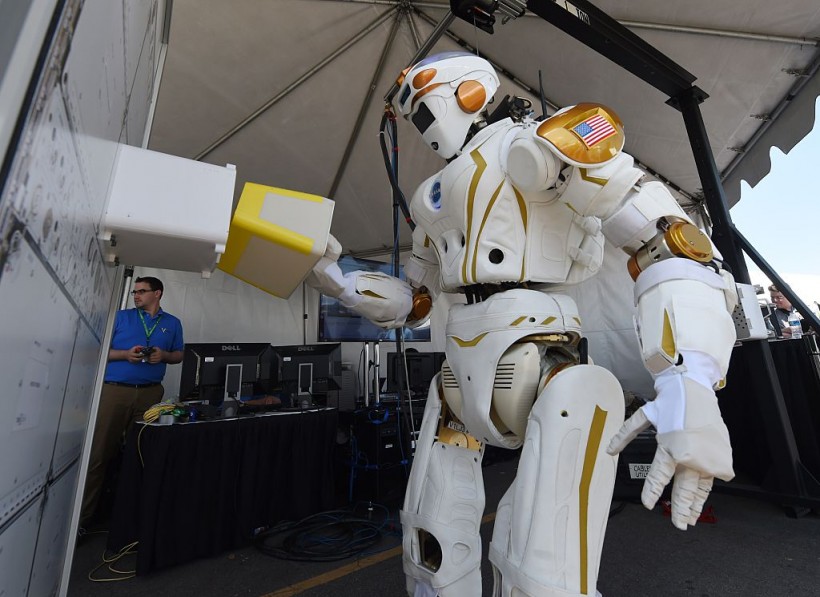NASA's humanoid robot Valkyrie undergoes rigorous testing at Houston's Johnson Space Center, taking space exploration to another level.
Valkyrie, at 188 cm tall and 136 kg, is designed to maneuver through degraded or damaged human-engineered landscapes, making it useful for disaster-stricken locations.
While its primary development focus is earthly, humanoid robots like Valkyrie are envisioned to contribute to the future of space exploration.

The humanoid robot named 'Valkyrie' designed by NASA is on display during the finals of the DARPA Robotics Challenge at the Fairplex complex in Pomona, California on June 5, 2015.
Robots to Take On High-Risk Endeavors for Humans
NASA Dexterous Robotics Team Leader Shaun Azimi sees humanoid robots performing dangerous chores like cleaning solar panels or investigating faulty equipment outside spaceships.
We want to empower astronauts by delegating monotonous, filthy, and risky labor to robots, freeing them up for more cognitively challenging exploration and discovery tasks.
NASA has partnered with Austin-based robotics company Apptronik to advance humanoid robots for space missions. A notable project in this collaboration is the development of Apollo, a humanoid robot meticulously crafted for terrestrial purposes, including warehouse and manufacturing tasks.
Apollo is poised to operate for extended periods, potentially up to 22 hours a day, with the added convenience of swappable batteries for continuous and uninterrupted work, per City Life.
Nick Paine, the Chief Technology Officer at Apptronik, underscores Apollo's endurance and adaptability, positioning the robot as superior to its human counterparts in specific applications.
As software and development progress, the capabilities of robots like Apollo are anticipated to expand. Jeff Cardenas, CEO of Apptronik, envisions the robot's application extending beyond warehouses, encompassing retail, delivery, and even unstructured spaces.
Read Also: Biden Administration Allows Apple Watch Import Ban to Proceed Amid Patent Dispute
NASA's proactive engagement with robotics companies reflects a deliberate move to explore how terrestrial robotic technology can seamlessly adapt to the distinctive challenges of space operations.
Both Valkyrie and Apollo are engineered with modularity in mind, allowing them to adapt to various applications. The continuous evolution of software and development further accentuates the potential for these robots to operate effectively in space environments.
Robotics Technology Progressing
NASA's collaboration with innovative companies like Apptronik seeks not only to address current challenges but also to identify key gaps, steering future investments toward certifying terrestrial systems for space operations.
"And that's where NASA's really trying to get that insight - to see what are the key gaps, where we would need to invest in the future to bring a terrestrial system into the space environment and certified for operating in space," Azimi said, as quoted by Reuters.
In July, NASA's Valkyrie robot underwent a mission in collaboration with Woodside Energy in Perth, Western Australia, as part of a reimbursable Space Act Agreement. The objective was to develop remote mobile dexterous manipulation capabilities for caretaking uncrewed and offshore energy facilities.
Woodside Energy tested the resulting software, providing valuable data and feedback to accelerate the maturation of robotic technology. According to NASA, the collaboration enhanced remote operations, potentially improving efficiency and safety for Woodside's offshore activities. The developed capabilities may have applications for past NASA Artemis missions and other Earth-based robotics objectives.
Related Article: NASA's 3D-Printed Rocket Engine Beats Previous Records, Advancing Deep-Space Exploration










